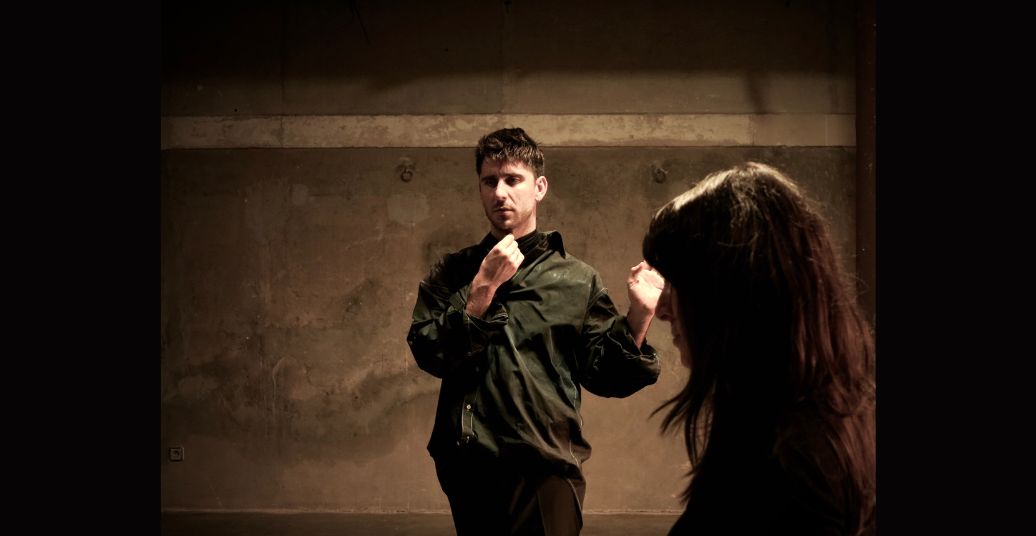The five-hour DREAM (2022) by Alessandro Sciarroni at St. Elisabeth Kirche (visitors can come and go) in Tanz im August (24–25 August), while relaxing, lacks tension and falls short of the potential of an embodied ‘dream’.
Dressed in black gumboots, cut-off black fishnet stockings, and layers of dark trousers tailored into short, frayed variations, seven dancers in their mid-30s and early 40s sway slowly in the cavernous, light-filled church. Amorphous floating gestures move them separately through flows that never find endpoints, rupturing and redirecting haphazardly in faster spurts (gently digging, scratching, scrunching and smelling invisible objects and architectures with their hands). Then, perhaps distracted by a romantic whim, the ethereal floating motions continue.
We, visitors, flank the sides of the church to sit against the walls. Sciarroni, not a performer in his work, stands out among the spectators, often moving around to sit in different areas more centrally within the room. Given the program note and video excerpts I see online of DREAM in past contexts, I wonder if he wishes to tacitly choreograph us by example to peel away from the perimeter, to “wander and discover new scenes.”
In the centre of the room is an upright piano on which a pianist, also in the dark, layered clothing with elements that signify different scenarios, plays fragments of recognisable, populist-toned classical music such as Erik Satie’s Gymnopédies. An air of pomp surrounds the instrument and musician. The effect of the beautiful yet generic sound on my experience is like when I play these very pieces while I work on my computer: an acoustic, mind-clearing condition to focus. The subtle rhythms of piano keys—light ascensions and cascades—complement the bodies floating in my vision. The stakes are low; I drift.
The performers’ eyes are glassy, gazes unfocused. Slight smiles curl now and then at their lips as they stare up, out and into the space around them, proposing that there’s poignant scenery in the atmosphere invisible to us, visitors to the dreamers. It is only when dancer Edoardo Mozzanega moves close to my neighbour and me, reaching airily into the negative space between our shoulders, that I realise our presence as visitors is necessary to what first appears like seven representations of states of unconscious, ‘dreamy’, individual oblivion. In my intimate encounter with Mozzanega’s performance, I feel his gaze consciously look through me as a performative strategy to produce a sense of imagination. I am part of an invisible horizon in a dream through an act that is possible precisely through my presence and his recognition of it in the reality of the performative situation.
Our closeness allows me to notice small, physical details: the individual strands of his feather earring, the texture of stubble he strokes on his face, the wrinkles on a hand propping up the chin of a visitor nearby whose attention is absorbed by another dancer. Sciarroni refers to the dancers in his program note as “works of art in the flesh” who “silently (and joyfully) express the desire to be innocently powerless”. Dreams and dreaming in this work offer a preconceived vision that doesn’t move me beyond suggestion nor engage the potentiality of dreams but produces soothing vibes with a sentimental undercurrent.




